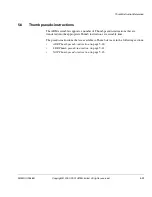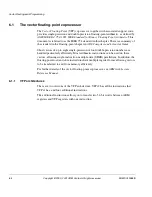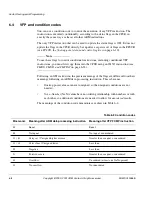
Vector Floating-point Programming
6-4
Copyright © 2000, 2001 ARM Limited. All rights reserved.
ARM DUI 0068B
6.1
The vector floating-point coprocessor
The
Vector Floating-Point
(VFP) coprocessor, together with associated support code,
provides single-precision and double-precision floating-point arithmetic, as defined by
ANSI/IEEE Std. 754-1985 IEEE Standard for Binary Floating-Point Arithmetic
. This
document is referred to as the IEEE 754 standard in this chapter. There is a summary of
the standard in the floating-point chapter in
ADS Compilers and Libraries Guide
.
Short vectors of up to eight single-precision or four double-precision numbers are
handled particularly efficiently. Most arithmetic instructions can be used on these
vectors, allowing single-instruction, multiple-data (SIMD) parallelism. In addition, the
floating-point load and store instructions have multiple register forms, allowing vectors
to be transferred to and from memory efficiently.
For further details of the vector floating-point coprocessor, see
ARM Architecture
Reference Manual
.
6.1.1
VFP architectures
There are two versions of the VFP architecture. VFPv2 has all the instructions that
VFPv1 has, and four additional instructions.
The additional instructions allow you to transfer two 32-bit words between ARM
registers and VFP registers with one instruction.
















































